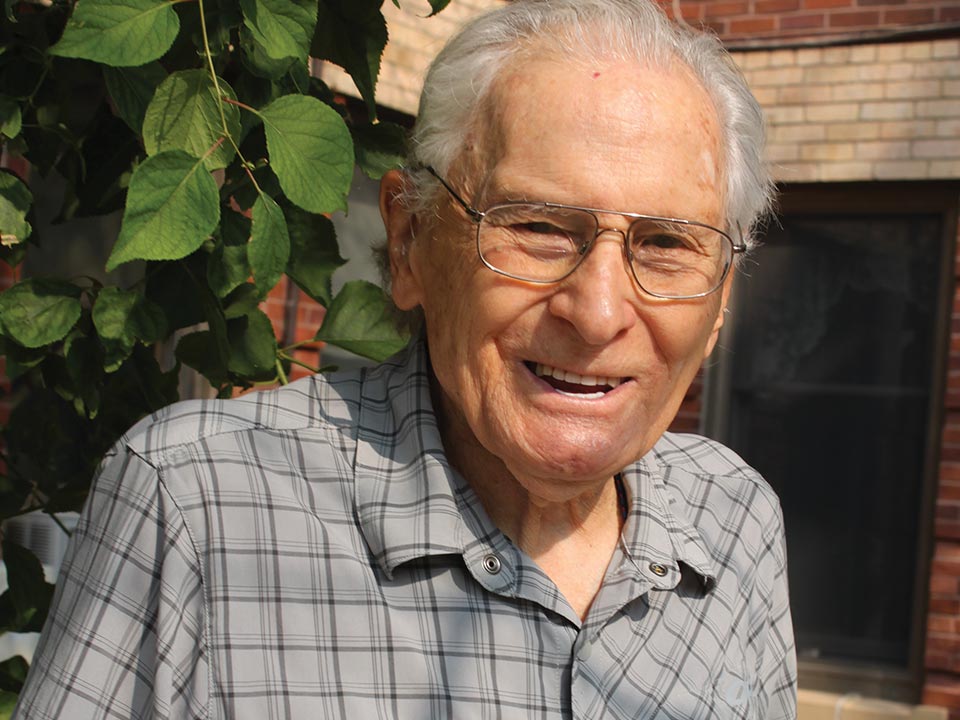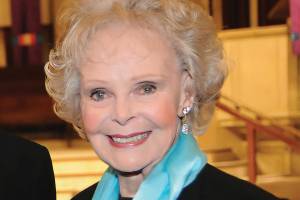By SUZANNE WARING
Georges de Giorgio has packed the adventures of several lives into his 92 years. He could sing the country song, “I’ve Been Everywhere” with honesty.
That song lists towns in the United States. De Giorgio’s version lists countries and cities around the world.
Although he was born in France in 1928—his Italian father and Chilian mother had been living in France at the time—his father wanted his child to be born in Italy.
With the baby on its way, the couple made a mad dash to get to an Italian hospital when their car crashed into a tree somewhere between Antibes and Cannes, France.
Little Georges was born in the car.
His family was the traveling type, and de Giorgio was baptized in Algiers during the few months the family lived there before going back to France and then traveling to the United States for two years.
Because his mother owned property in Chile, they migrated to Vina del Mar in central Chile when de Giorgio was around 5 years old. There he grew up and was educated.
His father took up building unique wooden sailboats, which gave de Georgio the opportunity to learn the skills of a master sailor early on. In 1947 when he was 17, he joined the one-year U.S.S. Beaumont Expedition to Antarctica.
During the job interview, Commander Ronne asked de Giorgio if he was an American. De Giorgio thought to himself that Chile was in South America, so he replied that he was an American. While in Antarctica, the group traveled with dog teams across the continent from the Atlantic to the Pacific.
Fifty years later, the expedition and those who went on it were honored in Beaumont, Texas, the city for which the ship was named. De Georgio and two others were the only living individuals from the expedition. De Giorgio received a key to the city.
In 1948, he was inducted into the Chilean army for one year as all young men were, but his experience was put to use. He became the technical advisor on another expedition to Antarctica, this time led by the Chilean army.
In 1951 through 1952, de Giorgio ferried sailing vessels from one location to another. Some were vessels that his father made, while others belonged to wealthy people who wanted to have their boats moved from one side of the North American continent to the other. He passed through the Panama Canal many times.
On one trip his father went with him. They ran aground near Nicaragua and didn’t know the extent of the damage to the hull, so they limped into Havana, Cuba.
It was at night, and looking for a place to dock, they found a yacht club that was lit up. The man with the fishing boat in the next berth greeted them. De Giorgio’s father didn’t take to this unshaven, untidy man, but de Giorgio was friendly toward the stranger.
That evening the man, whose name was Ernest Hemingway, showed de Giorgio around Havana. Over the years, De Giorgio kept in contact with the Hemingway family, who lived in Ketchum, Idaho.
Living near the ocean and being familiar with sailing ships took de Giorgio to the next phase of his life. For the next 15 years he was the captain of various small sailing ships. He sailed the Caribbean and Mediterranean seas, but mostly sailed the South Pacific, picking up and delivering goods—rice, pasta, copper, copra, and mother of pearl shells.
In 1957 he became involved in a Chilian movie production as a technical advisor for sea scenes. The actor who played the villain took off, so de Giorgio got the part. Later a U.S. production company was working on a movie in Acapulco. This was when he met actors Hugh O’Brien and Cliff Robertson.
He also met actress Stefanie Powers when she came onto the dock and wanted a tour of the yachts anchored there. They dated during her stay in Acapulco.
The government was becoming oppressive in Chile in the early 60s, so de Giorgio and a crew of three escaped to Peru in a 20-foot sailing boat. From there they set sail for the French Polynesian Islands, where de Giorgio sold the boat to Marlon Brando.
Picking up a job as a navigator on a second boat in Tahiti, de Giorgio ended up going to Hawaii and finally ended his journey in San Pedro, Calif. All of these experiences gave him the opportunity to become acquainted with boat owners from around the world. He found work as delivery captain for a company that sold yachts.
He also met the captain of the American Yacht Club in San Pedro, Calif., in September 1963, who sent de Giorgio to UCLA to learn scuba diving, so he could teach the skill. De Geiorgio applied for and received permanent citizen status in the United States, where he lives to this day.
In 1967 he was working at the Yacht Club in Acapulco when a man came onto the dock and introduced himself as Avery Brundage, President of the International Olympic Committee. Brundage asked de Giorgio to fill out an application to work as the harbor master during the yacht race trials and finals of the 1968 Olympics in Mexico. De Giorgio got the job and worked as harbor master in Acapulco for two-and-a-half years. He also worked during the 1984 summer Olympics that were held in Los Angeles. Because of his language skills—he spoke English, Spanish, and French—he ended up working public relations for the Canadian Synchronized Swimming Team.
In 1964, 1966, 1968, and 1970 he participated in a 1,500-mile sailing race between San Diego and Acapulco, Mexico. The race was discontinued in 1972 because it took too long since the wind often failed, and the contestants would run out of food and supplies.
In 1966 de Giorgio married a Mexican native, and they lived in Southern California with their two children. Since he now had a family, he knew he had to find more dependable employment. He abandoned his passion for the ocean and installed solar panels for Arco Solar in California for five years.
When his marriage ended, the traffic in Los Angeles was getting unbearable, and he was old enough to retire, he left the sunshine state and ended up in Medford, Ore. There he met a Montana woman.
One day in 1995 she told him that she was going home to Montana, and if he wanted to go, he needed to “get into the car.” He did, and, once he got to Montana, he chose Great Falls as the place to lay down his knapsack.
De Giorgio has spent his Montana years volunteering with the Great Falls Historical Society and with the Lewis and Clark Interpretive Center. One day in 1998, he went home to find voice messages from both places, saying he needed to show up for a job interview at the Ursuline Center.
He was hired on the spot and has lived and worked there ever since. He locks up at night, does general maintenance, works in the office, and gives tours for visitors.
“I like my work here because I get to meet so many people who use the facility,” he said.
Because of macular degeneration, de Giorgio had to give up driving a few years ago, but now he has an electric tricycle that propels him to places like the library or downtown or the History Museum in the short time that it takes to sing his version of “I’ve Been Everywhere.” MSN








